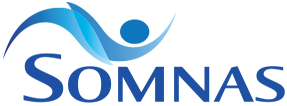Phototherapy for Advanced Sleep-Wake Phase Disorder (ASWPD) and Delayed Sleep-Wake Phase Disorder (DSWPD)
- Imtiaz Ahmad MD, MPH, FCCP
- Updated on: December 7, 2024
- General, News, Sleep

If you find yourself falling asleep much later than the conventional bedtime, you may suffer from Delayed Sleep-Wake Phase Syndrome (DSWPD). This disorder occurs when your sleep is delayed by two or more hours beyond the socially acceptable or conventional bedtime. The opposite of this disorder is Advanced Sleep-Wake Phase Disorder (ASWPD) which is characterized by an earlier than normal bedtime and early morning awakenings. These disorders are influenced by a misaligned circadian rhythm, which is the “body clock” that cycles between sleepiness and alertness.
Sleep disorders like DSWPD and ASWPD can be very disruptive when the sleep-wake cycles occur at times that aren’t compatible with your lifestyle. Conditions like this can be frustrating and have the potential to disrupt daily life. If you or someone you know suffers from sleep disorders, phototherapy is an easy and effective way to improve sleep health.
Phototherapy, also referred to as “light therapy” or “blue light therapy”, is an effective way to improve your body’s sleep cycle. Phototherapy is a regimen of controlled, intentional light exposure using different colors and frequencies of light to reset the circadian rhythm.
Light therapy is used to advance or delay sleep for people who don’t fall asleep or wake up at appropriate times. Everyone has an internal body clock that is influenced by the light our eyes perceive. Cool light such as blue light, white light and green light have wavelengths that tell the mind to stay awake. These forms of light should be used to keep the mind awake, which can delay bedtime for people with ASWPD and advance awakenings for people with DSWPD. Warmer light like red or amber light allows melatonin production to occur, which makes it easier to fall asleep. These types of light are used to induce sleep at different times depending on the patient’s specific needs.
To get phototherapy for sleep disorders, you should first speak with a sleep specialist to develop an approach that will be the best fit for your needs. A specific amount of brightness, timing, frequency and duration are essential to the success of phototherapy. These factors must be determined by a professional, and a sleep specialist can also give you strategies for using the light on a specific schedule. The specialists at Somnas are trained in these therapies and can help get anyone back on track with a proper sleep cycle.
The basics of home-based light therapy usually go as follows:
- Improving sleep hygiene. Oftentimes this won’t solve sleep disorders such as DSWPD / ASWPD, but it will help with treatment.
- Exposure to natural light. Getting exposure to bright light first thing in the morning can make it easier to wake up feeling refreshed.
- Exposure to artificial light. If natural light exposure is limited or not practical, a bright light lamp can provide the type of light needed to influence the circadian rhythm.
- Make sure you’re exposed to the right intensity. Your sleep specialist can recommend the right amount of light intensity for your needs.
- Timing is critical. For people with sleep disorders like DSWPD / ASWPD, light in the morning is key. Your physician may also suggest waking up earlier in specific increments.
- Stay on a schedule. Following the schedule given to you by your doctor will result in a faster and more effective treatment.
- Avoid bright light in the evening. In accordance with your physician’s treatment plan for you, blue spectrum light should be avoided in the evening because it inhibits melatonin production.
For some, complementary therapies may be suggested. Phototherapy is known to have additional benefits such as vitamin D exposure and elevated mood. For treatment or more information on phototherapy and its benefits, contact us today.
QUESTIONS ABOUT A SLEEP ISSUE? LET’S TALK.
Imtiaz Ahmad, MD, MPH, FCCP
Dr. Imtiaz Ahmad is a highly qualified physician, Board Certified in Pulmonary and Sleep Medicine. He has received advanced training from some of the most prestigious institutions, including Harvard University, Cornell University, State University of New York at Brooklyn, and the University of Mississippi. SOMNAS is a medical facility that is committed to improving and maintaining the health of patients with sleep disorders. The expert team at SOMNAS is known for their compassionate and high-quality care. They offer unparalleled treatment and care to patients on the Gulf Coast of Florida, ensuring a better and healthier life for them.
Job Title: Board Certified in Pulmonary Medicine


